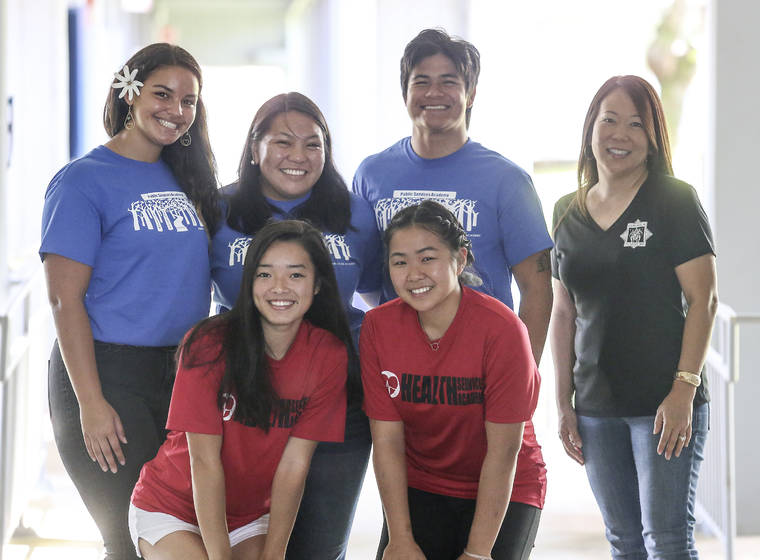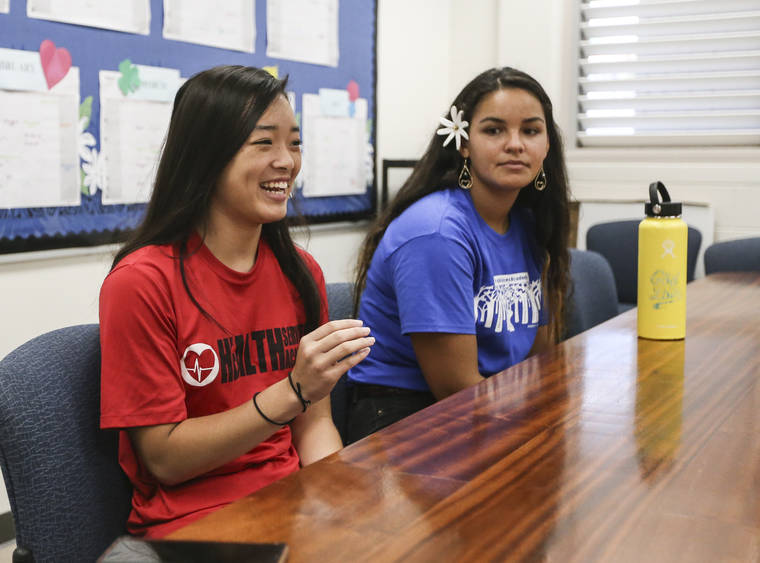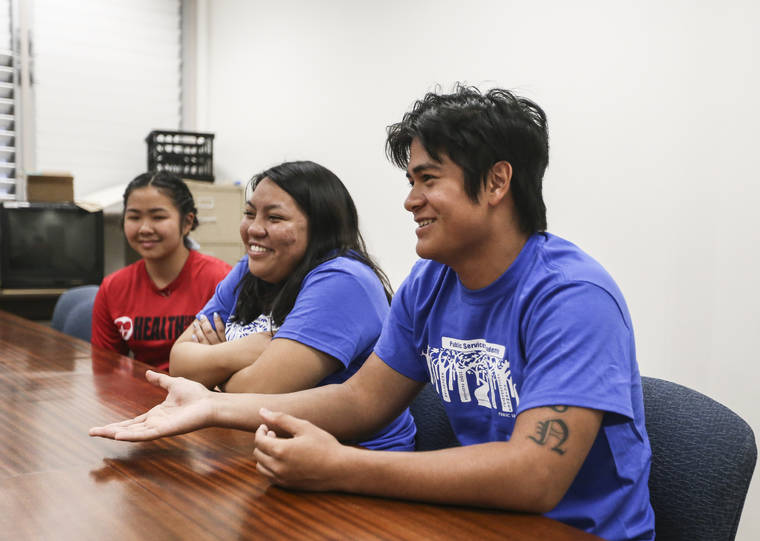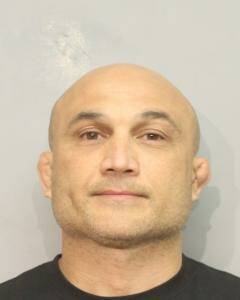Two Waiakea High School career academies achieve ‘model’ status



Two Waiakea High School career academies achieved “model” status from the National Career Academy Coalition, which certifies the learning communities meet or exceed national standards of practice.
Waiakea High’s Health Services Academy and Public Services Academy are the first neighbor island career academies to achieve that recognition.
ADVERTISING
Career academies were established in 2004 at Waiakea High School, and after a redesign in 2012 the school was divided into four career academies and one freshman academy, said Principal Kelcy Koga.
Currently, career academies include Health Services, Public Services, S.T.A.R. (Sustaining Traditions, Arts and Recreation) and B.E.S.T. (Business, Engineering, Sciences and Technology).
According to Koga, students in the second semester of their freshman year declare an academy for the following year. The academy the student chooses “basically has all of their electives set up already,” depending on the career the student is interested in pursuing.
Achieving model status is much like an accreditation, he said.
It is a designation the school sought out.
Within the current academy structure, “we found that we were moving in the right direction but … right around maybe the last three years or so, we noticed that things were kind of plateauing. We weren’t necessarily getting better,” Koga said. “(Academies are) trying to ensure our kids not only graduate with their core skills, but also skills within the field they want to address when they graduate.”
He didn’t anticipate that the school would achieve model status initially, but thought the certification process would help school leaders examine what was working, what wasn’t and where improvements could be made.
“And that was the whole impetus behind (it) — trying to get deeper and trying to offer our students more opportunities and come up with ideas,” Koga said. “We figured (with) a national certification process, they’ll come down, they’ll give us ideas and we go from there, and then maybe we can get model status. But we didn’t think we’d get model status up front, so that was a nice surprise.”
Academies can be recognized as in progress, certified or model, which is the highest designation from NCAC. To reach model status, academies must meet or exceed proficiency in all 10 areas of the national standards of practice.
“It’s a big deal … ,” Koga said. “To be nationally recognized in anything that’s not negative is a huge plus. I think for a neighbor island school, we consider it a huge accomplishment for us because Hilo’s a small town and there’s not always a lot of exposure for our students. But the community and the business people we’ve worked with, the businesses that we’ve worked (with) have really, I think, taken us in, willing to work with our students …”
The model status will be in place for four years, and in the next academic year, Koga said the school will seek the same status for its other two career academies.
“I know it does say that we’re progressive, (that we are) trying to be proactive, not only coming up with a traditional high school experience for kids but ensuring that they have a direction and that when kids graduate from high school, they’re just not saying ‘well, I’m just going to go to college,’ because that’s not enough today … ” he said about receiving the model status designation.
A number of students were also part of the review process, serving on a student advisory board and answering questions about their academies and academic pathways, said Public Services Academy senior Kylie Tanouye, 17.
Kobie Uyeda, 18, a senior in the Health Services Academy, said they also showed inspectors around the school’s campus, classrooms and labs.
But the designation is also important to students.
“For seniors, after we do our senior project, you’re either an (academy) completer or not a completer, and I think having that nationally-recognized academy also helps a lot when colleges look at your diploma and stuff,” Uyeda said.
“I think it’s also a way to push students to become an academy completer because if we’re nationally accredited, then they’ll be more motivated to be a completer,” said Jennifer Nakano, 16, a junior in the Health Services Academy.
Anson Spain, 18, a senior in the Public Services Academy, said it will open new opportunities for the school’s underclassmen.
“I mean, we’re seniors. We’re going to graduate, so we’ll miss out on the (benefits),” he said. “But the underclassmen that will be coming up, they’ll be having more opportunities in their academies.”
Email Stephanie Salmons at ssalmons@hawaiitribune-herald.com.







